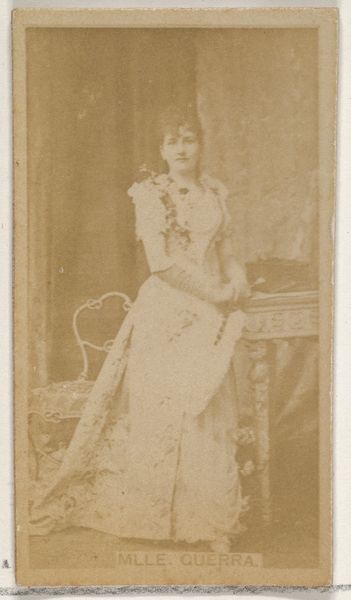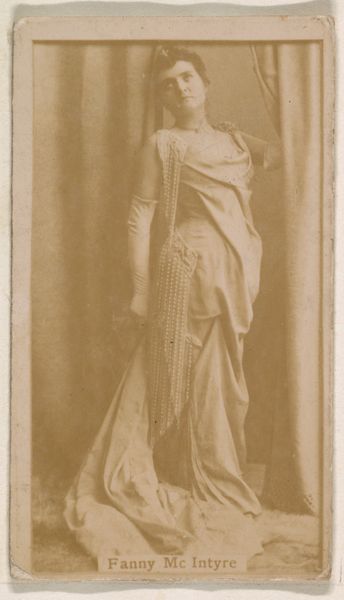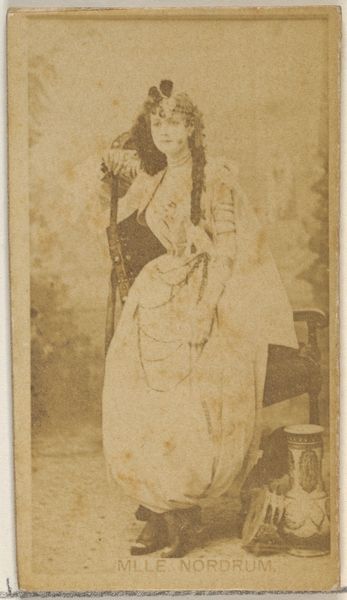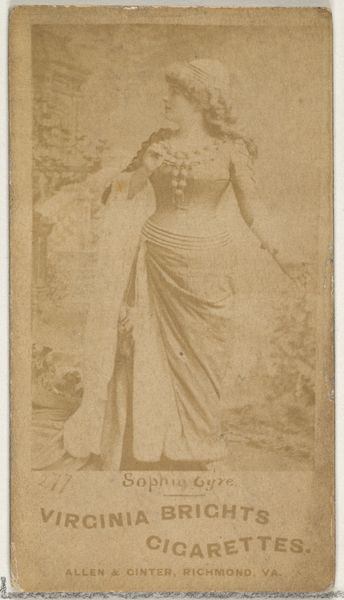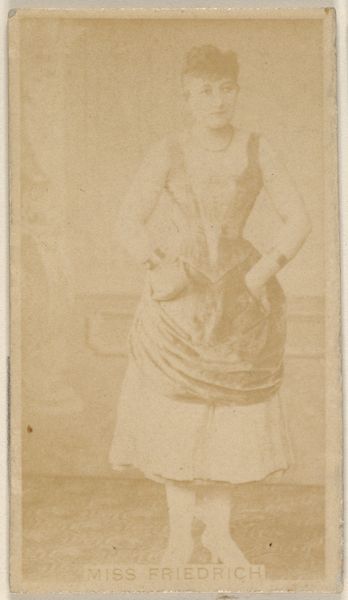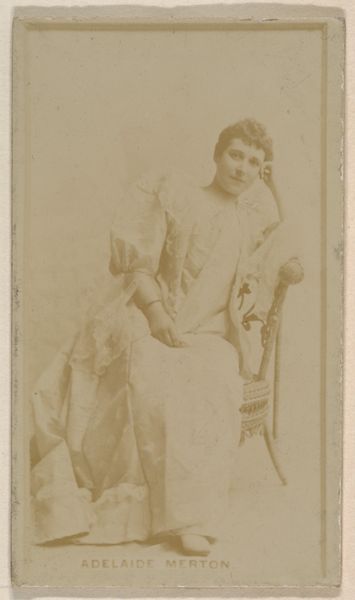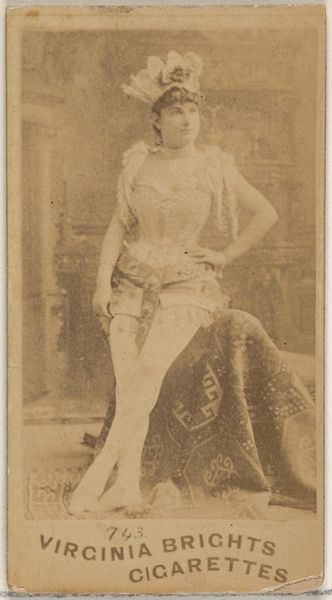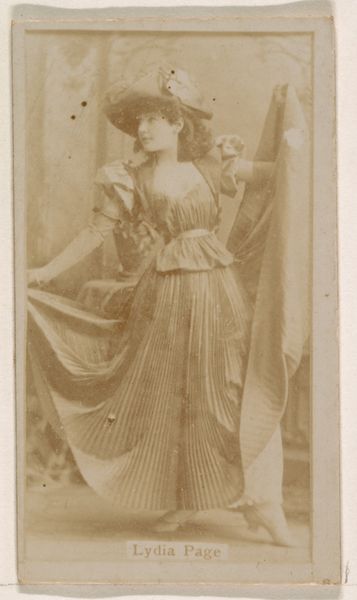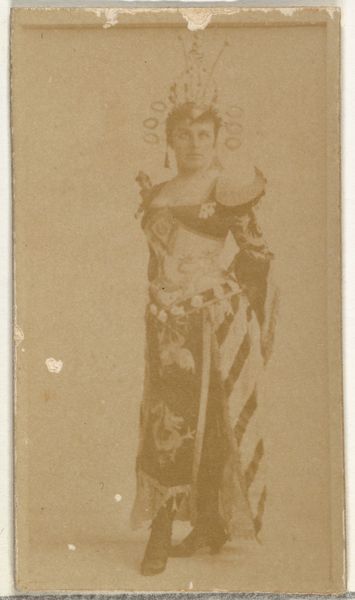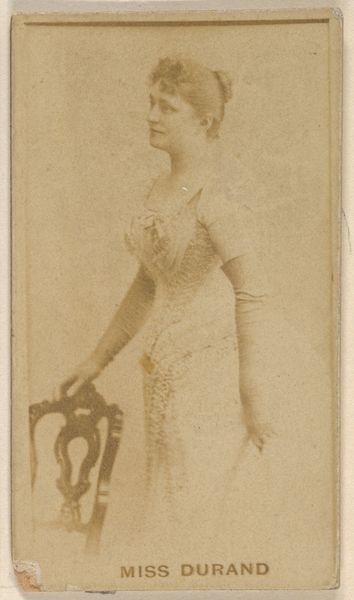
Mlle. Rordame, from the Actors and Actresses series (N145-8) issued by Duke Sons & Co. to promote Duke Cigarettes 1890 - 1895
0:00
0:00
drawing, print, photography
#
portrait
#
drawing
# print
#
charcoal drawing
#
photography
Dimensions: Sheet: 2 11/16 × 1 3/8 in. (6.8 × 3.5 cm)
Copyright: Public Domain
Editor: Here we have "Mlle. Rordame," a print from the Actors and Actresses series by Duke Sons & Co., dating from around 1890 to 1895. It's a curious piece; a woman who appears to be an actress posing in costume. Given that it was used to promote Duke Cigarettes, how should we interpret the purpose of the artwork beyond simply being a commercial product? Curator: It's fascinating how the culture industry was evolving at this time. Cigarette cards like this served a dual purpose: advertising tobacco while simultaneously offering a glimpse into the world of popular entertainment and celebrity culture. The portrait's theatrical backdrop and costume design would have conjured associations with particular performances. Consider how the distribution method through cigarettes—a new, mass-produced commodity—democratized access to these images, extending the reach of theatrical celebrity to wider audiences. Who was Rordame and how did these images work within the social landscape of advertising and the public's fascination with stars? Editor: So, these cards weren't just about selling cigarettes; they were about selling aspirations, and maybe access to celebrity? It seems they turned Mlle Rordame into an accessible ideal. Was that a typical role of actresses at the time? Curator: Exactly! Actresses occupied an interesting space. They were admired for their talent, of course, but their image also functioned within this growing marketplace of desires and ideals. Images were carefully managed, reflecting how societal values were performed, marketed, and consumed. These cards promoted particular forms of femininity that aligned with broader consumerist aspirations. Consider too, how such advertising campaigns actively constructed societal expectations around female representation, celebrity status and smoking at that time. Editor: I see. It’s more than just a picture; it’s a historical artifact reflecting both the entertainment and the marketing strategies of the era. Curator: Precisely! These seemingly small commercial objects offer insight into the socio-cultural fabric of the late 19th century. Examining their place in consumer culture provides critical perspectives on the making of celebrity and gender expectations.
Comments
No comments
Be the first to comment and join the conversation on the ultimate creative platform.
